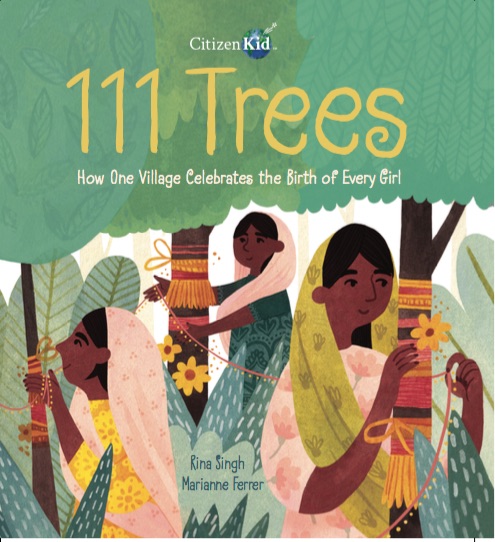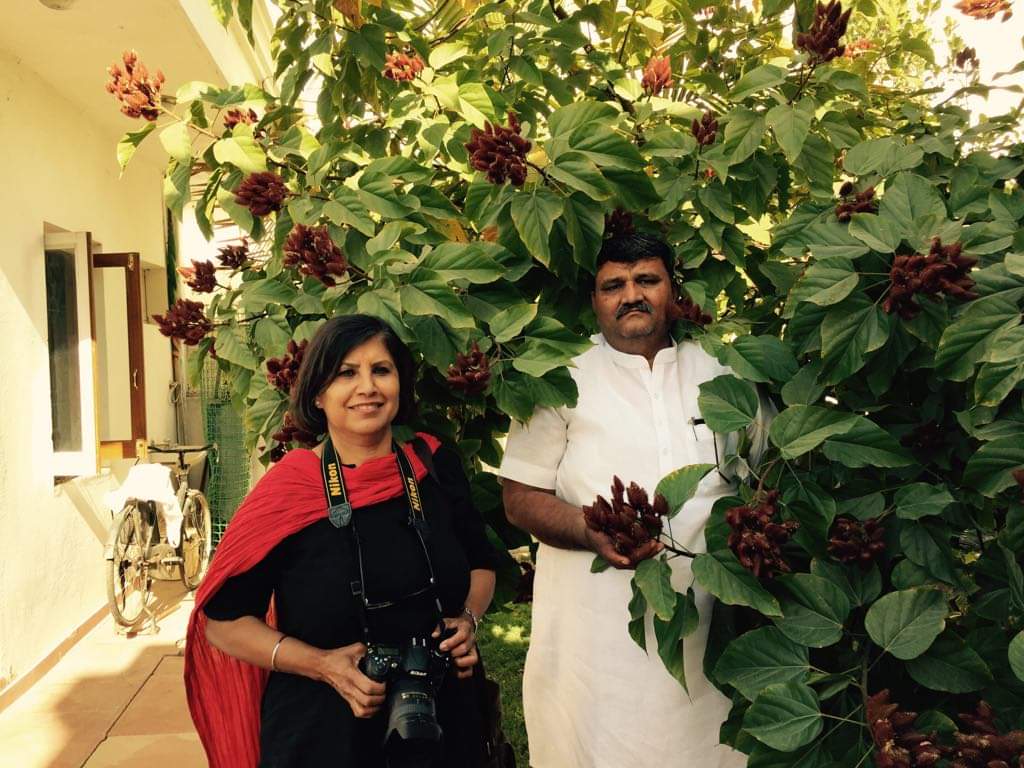I recently read a book that has everything this blog celebrates- #nature, #culture, #science, and #women. The book 111 trees by Rina Singh left me filled with wonder, silence, and inspiration. It is a #conservation story, with a human heart, shifting a culture that enabled greening a #desert. This #book is suitable for #reading in many contexts. A #family could read it on a rainy day and decide on a course of action to participate in a #local #conservation effort. A #teacher could share it as a part of a science lesson or in a social studies class. An #environmental #educator could share this story to inspire action. In the context of after school reading, this book can be combined with hands-on activities. The story is an inspiration for younger and older generations alike and moves the readers to act. This book is a good choice for #ownvoice #culturalinclusion.

When I reached out to Rina, she enthusiastically gave her time, answered some questions for the blog readers, and generously shared some pictures for the blog post. Please read and share the book with everyone who loves #green #nature #children #genderequality #conservation #empowerment. Rina loves to hear from her readers. Find out more about Rina Singh and her other works at https://www.rinasingh.com/.

Photograph courtesy (C) Rina Singh, 2020.
111 Trees is an amazing book that touches on nature, culture, and gender equality. What is your inspiration for writing this book?
What a great question! In one line, that was my inspiration – nature, culture, and gender equality.
Like countless other people, I have been concerned about nature and what we, as humans, have done to our environment. I got so excited when I heard about this man planting trees, which is really a no-brainer to start healing the planet.
I grew up in India, and even though I have been away for decades, Indian culture is still a big part of my life. I am deeply troubled when I hear negative stories happening there. So, when I hear a good story, I want to celebrate. When I heard about Sundar and the wonders he had done in his village, I wanted to chase the story.
I was lucky to grow up in a liberal Sikh family. I was never made to feel like a lesser human being than my brothers. But I was aware that not everyone was as lucky. Gender inequality has always been a thorn in my side, and I gravitate towards stories that can restore the balance. In Sundar’s story, everything came together.
The story seemed too good to be true, and I needed to see the village to believe it. So, in 2016, I went to India and planned a trip to Udaipur but was unable to get Sundar’s contact. I flew there anyways. (I don’t advise anyone should arrive unprepared like I did). The village where he lived was 80 kilometers away from Udaipur, and I arrived there by taxi. I was stunned because I had never seen any village in India this clean. I went to the local school, and the principal welcomed me and contacted Sundar for me, who happened to be in town. How lucky could I get? I toured the village with him, and then he invited me to meet his family. It was a beautiful day.
I interviewed him, and I was unsure if it would ever become a book, but the story had begun to form in my heart.
Tell us about the writing process you followed in writing this book.
I took a lot of notes, and Sundar gave me pamphlets to read about the village and showed me his awards. He generously offered to answer any questions on the phone should I need more information. I felt so honored to write his story. I established a rapport with him and got his permission to write his story.
Since it’s a picture book, I needed to convey this “big” story in about 800 words.
I came back to Canada and worked on the story.
Given the COVID situation and travel ban now, what suggestions do you have for biography writers to complete their research?
111 Trees is coming out in October, and I had planned to make copies of the book for Sundar and go plant trees in Piplantri. But sadly, that can’t happen. Not this year. I would suggest anyone writing about a living person during the pandemic should get in touch with their characters via technology. Skype, Zoom, WhatsApp, email – whatever it takes to connect to your character.
I’m working on another story from India, and on my last trip, I had planned to meet my protagonist, but she happened to be on maternity leave at the time. With the travel ban, I can only be in touch with her through phone and text messages. These people you are writing about will remain a part of your life after deciding to write about them. So, having a rapport with them is the best thing you can do.
Based on your experience writing this story, what are your tips for crafting biographies of living people?
It is ideal but not always possible to meet your characters in person. But if you get a chance to talk to your characters, ask questions that no one else can answer. If they are famous and have been written about, there will still be many details you will want to know, especially about their childhood. Find out about their dream, and what motivated them to do what they did?
What is the best way for teachers, and parents who are homeschooling, to use this book in their lessons and classrooms?
The book could start great conversations with kids. You can ask the following questions:
Do you care about the environment?
Do you want to become an eco-friendlier?
Do you want boys and girls to be treated equally?
This story illustrates the quote – “Be the change you want to see in the world” perfectly. One person can make a difference, and no act is too small.
Really, it didn’t take that much to get started; it just took someone who thought differently and made it happen.
What is the most surprising thing you discovered while writing this book?
That eco-feminism could be the answer to what is ailing our world!
How can families and young readers use trees to bring about social change?
What can young readers do about gender inequality?
I hope the story inspires children to see how one individual’s actions can bring about great, positive change. Wanting to address both the environmental destruction and gender inequality in his village, Sundar proposed that every time a girl is born, 111 trees be planted.
Find out about organizations in your country that fight to protect the environment and promote equality for girls.
In Canada, get involved with www.treecanada.ca
It takes only $5 to plant a tree. Help your school do a fundraiser. Visit their virtual forest.
Plan International is a member of a global organization dedicated to advancing children’s rights and equality for girls. Find out how you can get involved in the Because I am a Girl campaign.
https://plan-international.org/
Become an eco-feminist!
Thank you, Rina. We wish every village and every town, every city in this world planted trees when daughters are born. May be we could start a new tradition this summer and carry it forward. We wish you all the best and look forward to your new books.



Nice interview and inspiring story! Worth sharing…